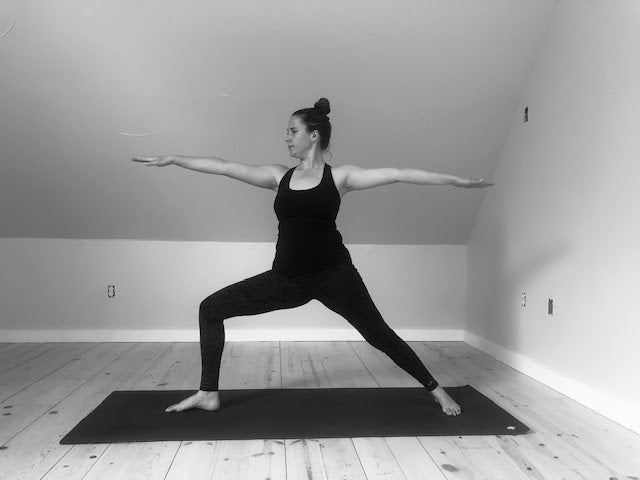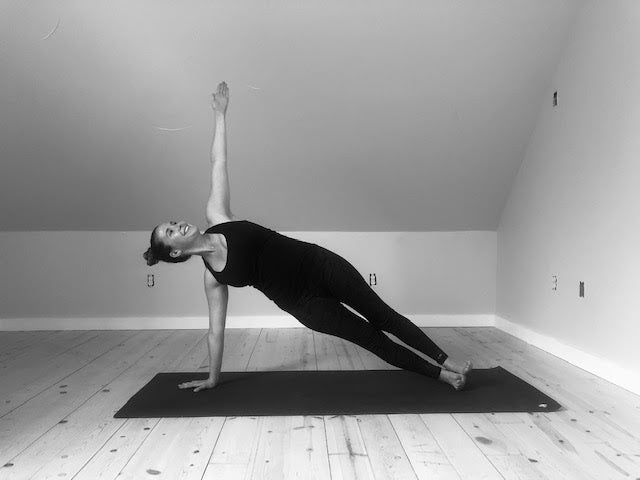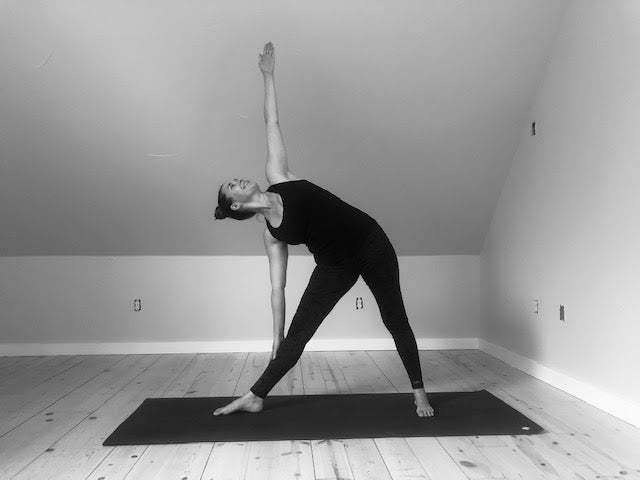
Virabhadrasana II: An Ayurvedic Guide to Warrior II

Virabhadrasana II, or Warrior II, is named after Virabhadra who is a reincarnation of Lord Shiva. Virabhadra took form to avenge the death of Shiva’s consort, Shakti. Warrior II is the stance taken as Virabhadra prepared to behead his enemy. Perhaps the most iconic yoga posture, Warrior II, allows us to open the hips, groin and shoulders. It increases circulation, builds bone density, tones the abdominal muscles and improves respiration. Lastly, it builds strength, courage, stamina and focus but it also asks us to seek compassion, integrity and kindness to ourselves and others. When done correctly, there is strength and sweetness in Virabhadarasna II.
From the Ayurvedic perspective, Warrior II is best to balance vata and kapha dosha; however, it can be practiced by pitta types with a loving intention behind the posture:
Vata- To balance vata dosha, focus on the grounding, static and stabilizing aspects of the pose. Slowly work up to longer holds, being aware to not fatigue the body.
Pitta- To balance pitta dosha, only spend a short amount of time in this posture or, if you find the posture to be too heating or aggravating, simply omit it from your practice. If you do practice Warrior II, have the intention to find the softness and compassionate energy this posture can cultivate. For example, focus on the soft and graceful lines created in the physical body and soften the eyes to seek a more gentle experience.
Kapha-To balance kapha dosha, hold the posture for an extended period of time and come back to this posture more than once in your practice. Stay strong and committed to the pose, especially when you have the feeling you want to come out of it, commit to staying there. Warrior II will help tone the body, cultivate prana and inspire creativity.
How to Do Virabhadrasana II:
- Begin in Tadasana (Mountain Pose).
- Step the right foot back, allowing the feet to be 4 feet distance apart.
- Bring the right foot to a 45 degree angle and ground firmly into the outer edge of the foot.
- Have the left toes point forward and bend the left knee so the left leg is in a 90 degree angle. In other words, bend your left knee and bring your left thigh parallel to the floor.
- Take a look at your feet and make sure that if you drew an imaginary line, the left heel would dissect the arch of the right foot.
- Once feeling strong and steady in the legs and open through the hips, make sure the shoulders are square to the right side of the mat and extend the arms out in a “T” position with the palms facing down.
- Bring your gaze beyond the left middle finger and allow the gaze to be soft and steady.
- Continue to press into the outer edge of your right foot and have equal weight in both of the feet.
- Firm the thighs and feel strong and tall through the spine.
- Draw the tailbone down slightly in order to avoid flaring the front ribs.
- Hold the posture for 5 rounds of breath.
- Step back to Tadasana.
- Repeat this series on the opposite side.
Precautions:
Contraindications for Virabhadrasana II:





Leave a comment
This site is protected by hCaptcha and the hCaptcha Privacy Policy and Terms of Service apply.